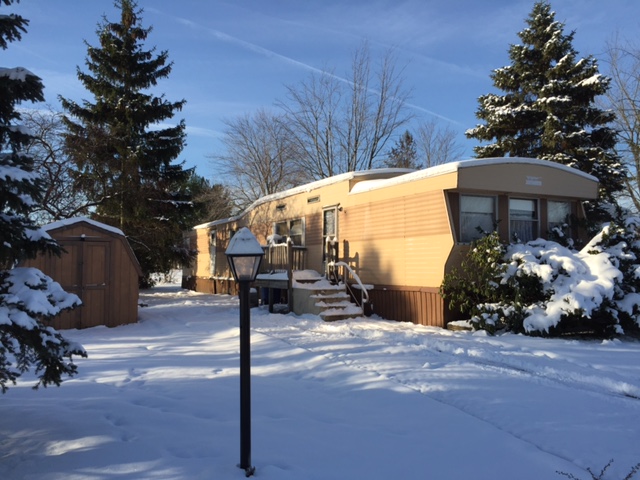A few weeks ago, I purchased this smaller two bedroom mobile home for $2,500:

The price was low because this home is over 30 years old and needs cosmetic updating throughout. My plan was to sell this home with owner financing. I was pondering two ideas with this home:
1. Sell the home “as-is” for $195 a month over a four year term.
2. Invest another $2,000 for paint, flooring and other cosmetic improvements. Once updated, sell the home for $250 a month over a five year term.
If you owned this investment property, which choice would you make?
My guess is you would probably select choice number 2. At first, I thought option number 2 was the best choice for this home until I ran the following numbers:
1. If the home sold for $195 a month with a four year term, the property would provide total income of $9,360. This works out to be an annual return on investment of 68.6%. ($9,360 – $2,500 invested = $6,860 profit) ($6,860 profit/$2,500 invested = 2.744) (2.744 divided by 4 years) = 68.6% annual return on investment.
2. If the home sold for $250 a month with a five year term, the property would provide total income of $15,000. This works out to be an annual return on investment of 46.6% ($15,000 – 4,500 invested = $10,500 profit) ($10,500 profit/$4,500 invested = 2.333) (2.333 divided by 5 years) = 46.6% annual return on investment.
Every time I run numbers like this, I’m blown away. The reason why is because my first choice always seems to be wrong. In most cases, updating the home turns out to be the worst option when it comes to the return on investment. Not only does updating the home reduce the return on investment, but it also increases investment risk. Instead of only having $2,500 invested, the paint, flooring and other cosmetic investment puts $4,500 at risk. (I realize $4,500 isn’t a great deal of money to risk. Regardless, the additional investment increases investment risk by 80%.)
Plus, it is a lot easier to sell a smaller home with a $195 monthly payment vs. a $250 monthly payment. The $195 monthly payment generates more phone calls than the $250 monthly payment.
Would you invest an extra $2,000 to reduce your return on investment by 22%?
Probably not.
My plan is to offer the home for sale “as is” as outlined in #1 and assess how things go after the first 8 to 10 showings. If I don’t have any interest, I’ll invest around $500 to have the interior painted and go for a second round of 8 to 10 showings. If I still don’t have any any interest, I’ll invest another $1,500 into new laminate flooring throughout the home and I’ll raise the price as noted in option #2.
The home could probably be carpeted for around $800. However, I’ll spend more and have laminate flooring installed. This will save money in the long run if the buyer ends up defaulting and I get the home back. I won’t have to mess with the floor and should be able to resell it quickly.
In a nutshell, the goal is to go after the highest return on investment, but not be too stubborn about it. Get feedback quickly and adjust as necessary by staggering additional investment into the home.
The return on investment is 0% if I don’t actually get it sold.
1 Response to "A $2,500 Investment Property? … And a lesson learned on return on investment"
You never mentioned lot rent. The longer you hold/fix it the lower your ROI… Let it Go and rinse/repeat if possible!